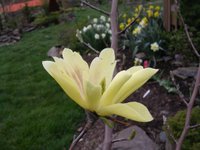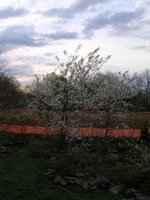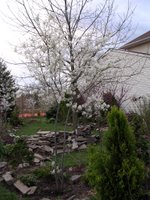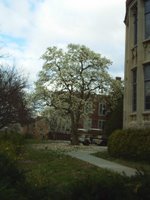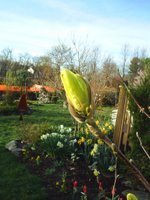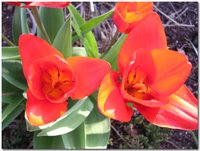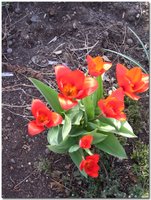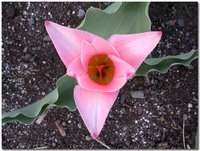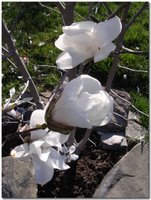The other colors of Spring and some sadness
There are whole spectrums of colors only unconsciously seen, like background noise they have to compete for our attention with the more colorful trees and brilliant flowering bulbs. For instance the newly opened sassafras leaves are a bright yellow but not noticed very much. Some of the trees are colored a certain hue because of the blending of flowers and new leaves. The distinctive color of the Russian olive is an example of creamy white flowers blending with pale whitish green leaves giving it a pastel green look. The ashes, maples, the reluctant oaks and sycamore all have their characteristic colors.
A new appreciation of the things hidden in plain view make the ornamentals seem somewhat out of place and artificial. Maybe that's too harsh a word. The winter is endless and we become obsessed with bright colorful things.
I am enjoying it all.
After I had written this our 10 year old cat with a large stomach tumor died this morning and one of our Koi apparently jumped out of the pond in the exuberance of Spring. It’s mouth was partially eaten away by a cat or raccoon. A sadness in all this beauty.



